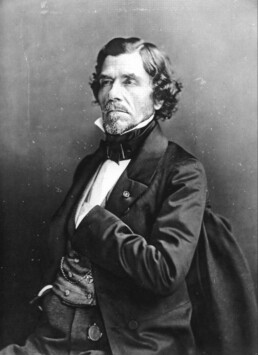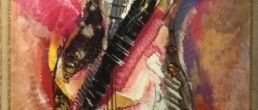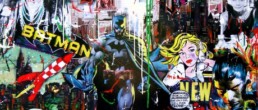Eugène Delacroix
1798-1863 (France)
Biography
A major painter of French Romanticism, Eugène Delacroix profoundly transformed the history of art through his use of color, his sense of movement, and his taste for exoticism.
Youth and training
Born in Charenton-Saint-Maurice on April 26, 1798, Delacroix grew up in a cultured family. A brilliant student at the Imperial Lyceum, he entered Pierre-Narcisse Guérin’s studio in 1815, where he became friends with Théodore Géricault. His classical training would nourish a body of work rich in narrative and emotion.
Early successes
In 1822, he exhibited La Barque de Dante (Dante’s Barque) at the Salon, which was quickly purchased by the State. Two years later, Les Massacres de Scio (The Massacres at Chios) established his dramatic and colorful style. In 1830, La Liberté guidant le peuple (Liberty Leading the People) became the emblem of Romanticism and artistic freedom.
Travels and maturity
In 1832, Delacroix discovered Morocco and Algeria: his “Orientalist” sketchbooks and paintings reveal a fascination with light and contrasts. He received numerous official commissions, notably decorating the Bourbon Palace and the library of the National Assembly.
Final years and legacy
Settling on Rue de Furstemberg in Paris, he continued to paint until his death in 1863. His writings and work influenced subsequent generations: Van Gogh, Matisse, and Cézanne saw him as a precursor of modern painting.
Delacroix and the Hurtebize Gallery
His expressive power, mastery of color, and sensitive approach to reality make Delacroix an essential reference for understanding modern painting, at the heart of the artistic values championed by the Hurtebize Gallery.







